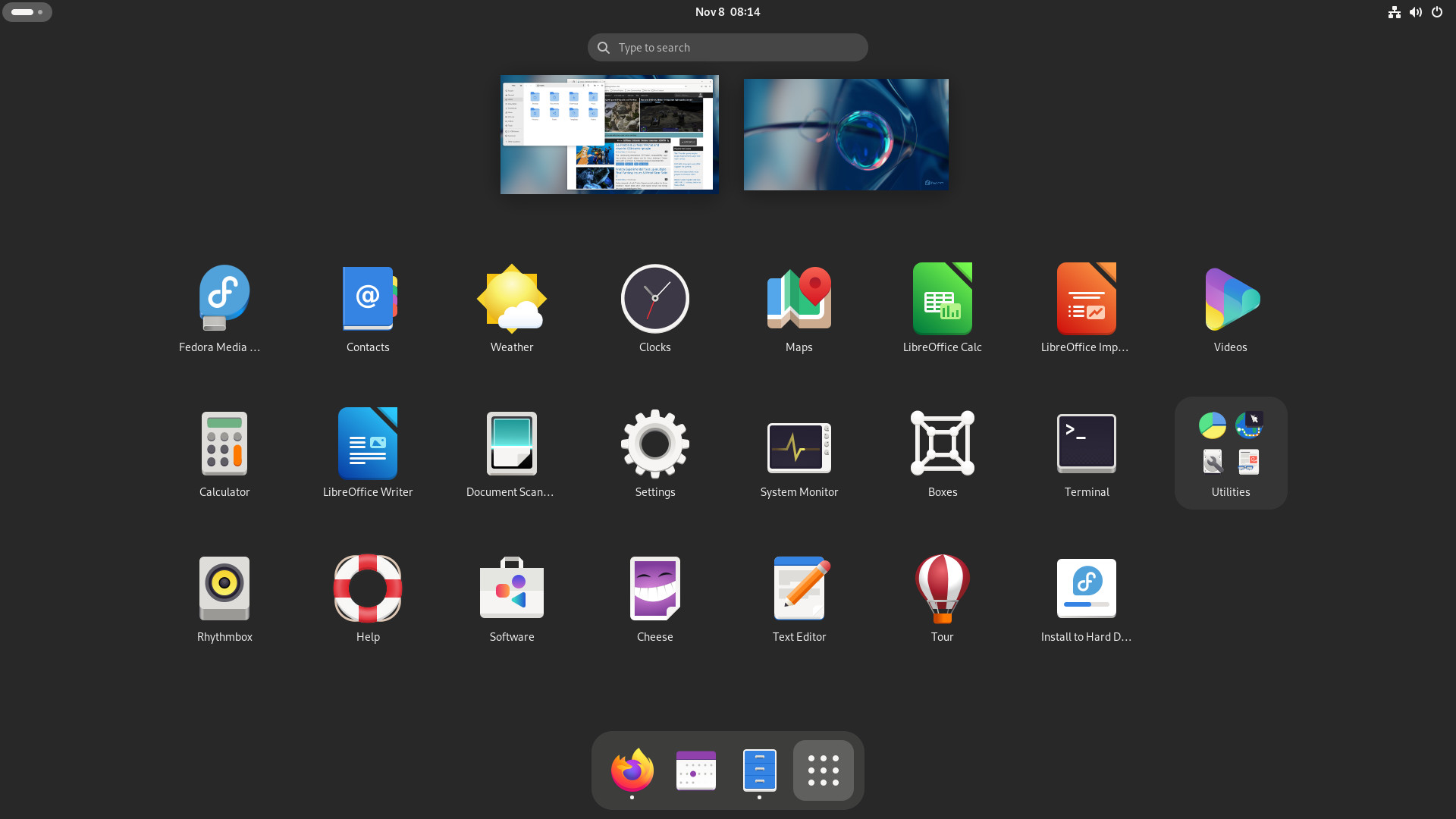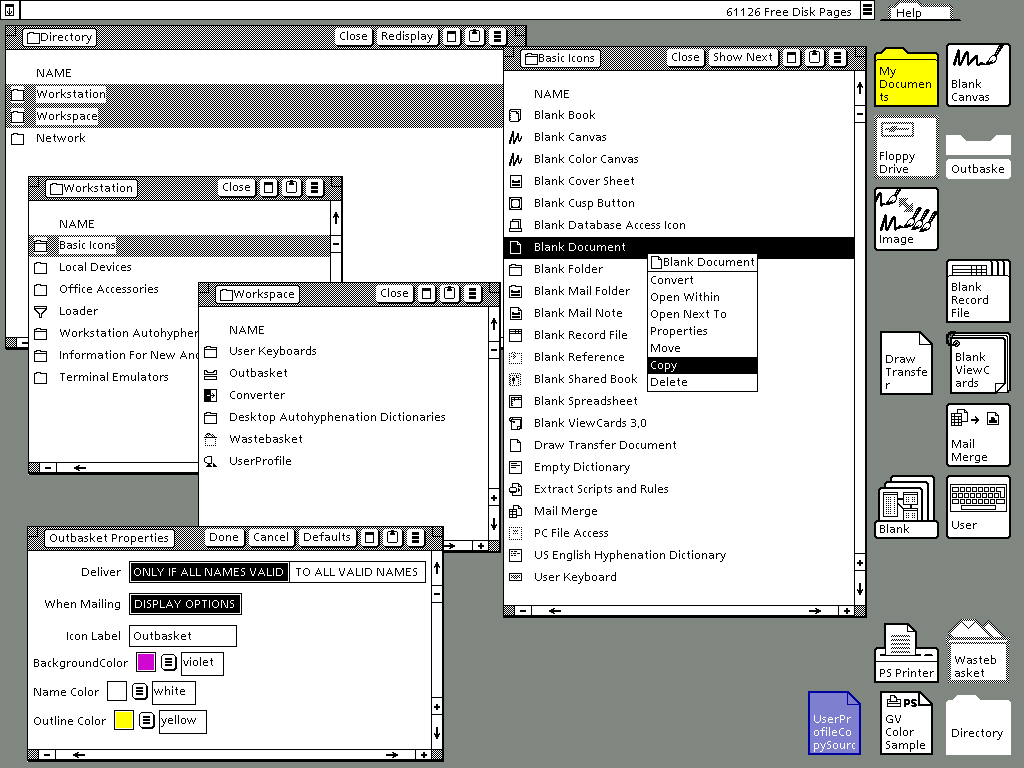The Fedora team announced the release of Fedora Linux 39 yesterday November 7th, bringing with it GNOME 45 and a ton of other improvements for one of the most popular desktop Linux distributions.
It's not all about GNOME though as there's upgraded flavours of Fedora that come with KDE Plasma Desktop, Xfce, Cinnamon, and others. There's even the fancy newer Fedora Onyx, an immutable desktop featuring the Budgie desktop. Coming with Linux kernel 6.5 and Mesa 23.2.1 supporting plenty of newer hardware for the best experience.
 Pictured - Fedora Linux 39, showing GNOME Activities Overview
Pictured - Fedora Linux 39, showing GNOME Activities Overview
Here you can expect probably the best GNOME experience, since it is their flagship desktop and they keep a pretty tight ship with the upstream GNOME project. GNOME 45 brings with it numerous new features like the Activities Indicator, fast searching, a Camera Usage Indicator, a new image viewer, a new camera app, improved settings, various Flatpak and Wayland improvements and much much more. Pretty much the vast majority of actual user-facing changes are from GNOME 45.
Other updates to the software includes GCC 13.2, Binutils 2.40, glibc 2.38, GDB 13.2, RPM 4.19, Python 3.12 and Rust 1.73.
 Pictured - Fedora Linux 39, showing GNOME Apps
Pictured - Fedora Linux 39, showing GNOME Apps
Grab it from the Fedora Website.
Are you upgrading? How did it go?
Gnome now resembles the bastard child of a smartphone, Mac OS, and Windows 11 - combining the worst elements of all 3 into the most dialectical GUI.On the contrary, GNOME changed my workflow completely. I mope when I need to use macOS or Windows. The workspace indicator is an improvement.
I've always maintained that GNOME is what macOS could have been if there was more thought behind some of the designs. And hell, it's really not hard to build a better file manager than Finder.
I like KDE a lot too! Having two rows of virtual desktops makes a lot of sense, for example.
Not too big a deal, of course; but Fedora can always introduce major releases of packages inbetween os releaes through the updates repo, which is enabled by default.
And Gnome, for me, is the best of the Linux desktops. I also regularly use KDE and Cinnamon and they are great in their own right, but with Gnome I get a bit more fun from my computing. I do miss a couple of KDE features, though.
Could have squeezed kernel 6.6 inThis isn't Ubuntu, there is no reason to squeeze in a specific kernel version. Fedora has rolling kernel version, so soon enough 6.6 will be in the updates for Fedora 39 and Fedora 38 too, and kernel 6.7 after that, etc... until the distro goes EOL in 13 months.
Gnome now resembles the bastard child of a smartphone, Mac OS, and Windows 11 - combining the worst elements of all 3 into the most dialectical GUI.I am quite passionate about OS UIs, and to me what it resembles the most is in fact Xerox GlobalView :

But I'm fine with diverging opinions, I am just happy to have a DE that fits my tastes completely.
Fedora 39 brought Mesa 23.2.1, which makes me gain quite a few FPS, along with increased vm.max_map_count out of the box. Also GNOME Files got a GUI overall that's pretty nice. On the negative side, HIP is now broken, but package maintainer is working on it.
https://gitlab.gnome.org/GNOME/mutter/-/issues/3120 for example worries me.
Last edited by jens on 8 Nov 2023 at 6:32 pm UTC
Gnome is really really poor if you are used to KDE and Windows GUI.
But if you only want to start one program and work with it, it is enough.
Could have squeezed kernel 6.6 inThis isn't Ubuntu, there is no reason to squeeze in a specific kernel version. Fedora has rolling kernel version, so soon enough 6.6 will be in the updates for Fedora 39 and Fedora 38 too, and kernel 6.7 after that, etc... until the distro goes EOL in 13 months.
That did a flyby on you I guess!
But if you only want to start one program and work with it, it is enough.
Darn, and here I thought I've been using many apps at a time across monitors/desktops with ease.
I swear, people just make up random things to dunk on desktops they don't use like it's some kind of war.
Actually I'm afraid to update. Wacom tablet support on Gnome Wayland is not yet there due to smaller issues like cursor doesn't become visible or clicks not being registered. On the other hand Wacom on X11 stills works nicely but broke horribly with the last two major Gnome releases and several minor releases were needed to get those regression fixed
https://gitlab.gnome.org/GNOME/mutter/-/issues/3120 for example worries me.
And that kind of stuff is why people like me prefer LTS distros. I can understand some have a real need to be on the bleeding edge, but others need stability to get work done.
Actually I'm afraid to update. Wacom tablet support on Gnome Wayland is not yet there due to smaller issues like cursor doesn't become visible or clicks not being registered. On the other hand Wacom on X11 stills works nicely but broke horribly with the last two major Gnome releases and several minor releases were needed to get those regression fixed
https://gitlab.gnome.org/GNOME/mutter/-/issues/3120 for example worries me.
And that kind of stuff is why people like me prefer LTS distros. I can understand some have a real need to be on the bleeding edge, but others need stability to get work done.
Yes, my work machine runs Ubuntu LTS, exactly to always be able to get work done ;)
To be fair, it wasn’t always like this. Usually Fedora updates were quite smooth for me with just the occasional hiccup (e.g. nvidia fbcon vs simpledrm). Only lately X11 really starts to decay. One the plus side that hopefully really brings the last Wayland glitches for non standard setups in the spotlight.
Upgraded yesterday without any issue. I didn't see a lot of change except for the pill on the top left and my extensions being broken until they update (I hate Gnome for doing that again and again)Same. This case is kinda justified though. The GJS was really in dire need of upgrades to allow developers to write extensions in a more modern way. This was really a royal pain in the neck and I appreciate any improvements on this side.
The changes are breaking but not very complex. It's mostly rewriting the way extensions include other files. There are however many extensions dead in the water that will probably never get the required updates, as usual. Most really are a one dev show and when the dev goes on hiatus we end up with this kind of situation.
Here is hope that this will not happen that often any more. Especially since there are now plenty of resources for new devs to get into GNOME extensions development, which was not always the case.










 How to set, change and reset your SteamOS / Steam Deck desktop sudo password
How to set, change and reset your SteamOS / Steam Deck desktop sudo password How to set up Decky Loader on Steam Deck / SteamOS for easy plugins
How to set up Decky Loader on Steam Deck / SteamOS for easy plugins
See more from me